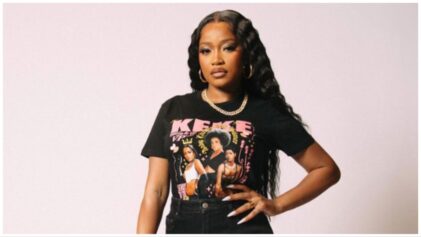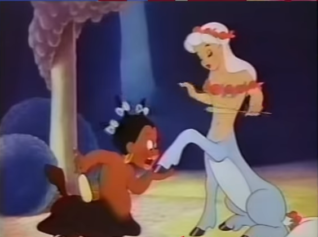Hollywood is abuzz about the success of “Girls Trip.” The bawdy comedy starring Regina Hall, Queen Latifah, Jada Pinkett Smith, and breakout star Tiffany Haddish is the first movie written by, produced by, directed by, and starring African-Americans to earn more than $100 million at the box office.
The success of “Girls Trip” should be celebrated. However, the film’s historic achievement also highlights the limitations faced by Black women in Hollywood. Tinseltown still has a considerable amount of work to do to create a space where Black women’s stories can be told.
A movie or television show begins with a script. However, Hollywood’s writers are not diverse. In 2014, film and television studios employed 5693 writers. Of these, only 91 were African-American women. Research shows that when women write, they are more likely to include women in their stories.
After the script is finished, a director must bring the words to life. However, Black women continue to fight for these opportunities. The Media, Diversity & Social Change Initiative at the Annenberg School for Communication and Journalism at the University of Southern California analyzed the race and gender of the directors of the 100 top-grossing films of 2016. Of the 120 directors, only seven were Black. All seven were men. The lack of Black directors matters because the study also found that the presence of a Black director — male or female — increases the likelihood that a film will include Black female characters.
The lack of diversity is a problem on-screen as well. According to the Annenberg report, nearly half of the top-grossing films of 2016 had no African-American women in speaking roles. Being literally written out of the story is a major obstacle to achieving true inclusion on the silver screen.
Despite these obstacles, there have been some improvements. The Center for the Study of Women in Television & Film at San Diego State University studied gender representation in broadcast (e.g., ABC, CBS, etc.), cable (TNT, HBO, etc.), and streaming (e.g., Netflix, Hulu, etc.) television programs. The Center found that Black women’s representation on broadcast television has been steadily increasing. Seventeen percent of female characters in the 2015-2016 television season were Black — a historic high. However, the good news on the small screen does not translate to the big screen. A second report by the Center found that only 14 percent of the female characters in the top-grossing films of 2016 were Black.
The sad pattern of exclusion continues when leading roles are considered. According to the Annenberg Report, only 14 of 2016’s 100 top-grossing films had a non-white leading actor. Of these 14, eleven were male, so just three of the 100 films starred a nonwhite woman in a lead role. While the Annenberg Center did not indicate the race of these three women, even if all three were African-American there is still room for improvement.
The diversity picture in television is better, but only slightly so. The most recent “Hollywood Diversity Report” from the Bunche Center for African American Studies at UCLA found that non-white actors were roughly 11 percent of the leads on broadcast television shows, a number that has doubled since the 2011-12 season. However, as the report notes, because non-whites are nearly forty percent of the U.S. population, there is still a representation gap.
Even when Black women are cast, they must be careful about the roles they choose. Stereotypes such as the docile mammy, the sharp-tongued sapphire, the oversexed jezebel, and the lazy welfare queen have all been used to attack Black women. Stereotypes in film and television are difficult to measure because there are no hard guidelines, so there is room for disagreement. Some admire Olivia Pope; others see shades of sapphire. Despite this disagreement, there seems to be agreement that certain characters (for instance, the oversexed, abusive mother in “Monster’s Ball”) are stereotypical.
While critics, scholars, and moviegoers may disagree on which roles are stereotypical and to what extent, scholars agree that stereotypes influence public policy. Several studies have found that exposure to racial stereotypes makes whites more likely to view African-Americans in a negative light. As Dr. Riva Tukachinsky, professor of communications at Chapman University wrote, “Women of color are particularly likely to be presented as hyper-sexual and less professional.” Moreover, she noted that “the prevalence of hyper-sexualized Black and Latino characters was associated with more negative [white] attitudes towards Blacks and Latinos in the U.S.” Unfortunately, these negative attitudes matter long after the credits have rolled. As Dr. Imani Perry, chair of the African-American Studies department at Princeton University writes, “[W]hile it is difficult to draw a direct causal link to policy discussions, we can take evidence of racially coded speech … as a strong indicator that … legislators, judges, and executives are shaped by images of people of color as deficient or threatening.” Because these stereotypes can influence public policy, it is not enough for us to demand more African-Americans be cast in roles. We must also work to ensure that the roles they are taking avoid racial stereotypes.
Finally, even if a Black woman is cast in a leading role in a major film, a final obstacle remains — money. It is well known that in most industries women are not paid as much as men. This gap remains intact for women of color in Hollywood. Not a single Black woman was included on the 2017 list of Forbes’ highest paid actresses. Tracy Ellis Ross earns $80,000 per episode of “black-ish,” making her the highest paid Black actress in a comedy series. For comparison, the highest paid white actress, “Big Bang Theory”’s Kaley Cuoco, earns one million dollars per episode. With $250,000 per episode, Viola Davis of “How to Get Away with Murder” and “Scandal” star Kerry Washington are the highest paid Black dramatic actresses on television. The highest paid white dramatic actresses, Lauren Graham and Alexis Bledel of “The Gilmore Girls,” each earned three times as much. Pay matters because it is impossible to create good stories when the actors are not paid equitably. Recently, the Asian-American actors in “Hawaii Five-O” left the show when they discovered that their white castmates were paid more for the same work. Because roles for nonwhites are already limited, these actors need reasons to stay rather than leave.
While the numbers for Black women in Hollywood are dismal, hope is on the horizon. Several Hollywood studios have created programs to find writers from underrepresented groups. But Black women are also doing what they can to change the situation by helping one another. Oprah Winfrey’s OWN network has partnered with director Ava DuVernay on “Queen Sugar.” ABC recently promoted an African-American woman, Channing Dungey, to act as head of programming. In her time at ABC, Dungey has helped bring shows like “Scandal” and “How to Get Away with Murder” to the network. The woman that made those shows, Shonda Rhimes, is the first Black woman to create and produce a top-ten rated network series. Rhimes’ work has created lead roles for Black actresses such as Kerry Washington and Viola Davis. While Black women should not have to carry the burden of creating diversity alone, working together, they are doing what they can to improve the situation. By supporting one another, these women have created opportunities where few existed.
Movies like “Girls Trip” are a welcome surprise because they help to convince Hollywood decision-makers that films starring Black women are profitable. Hopefully, the success of the film will inspire more films that feature Black women.


